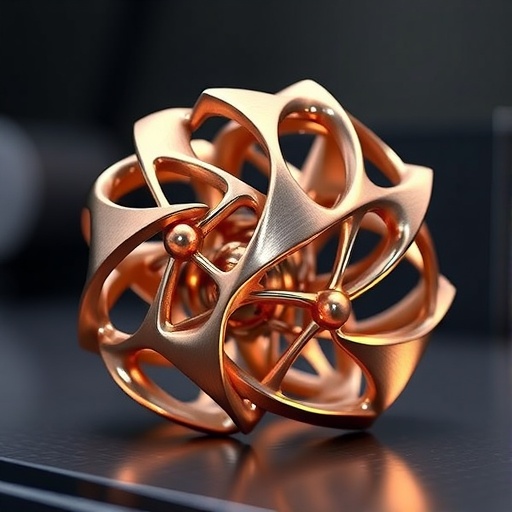In recent years, the convergence of machine learning (ML) with metal additive manufacturing (AM) has ushered in a new era of possibilities for quality control and process optimization. Metal AM, a cutting-edge technology enabling the layer-by-layer fabrication of complex metallic parts, faces inherent challenges such as defects, geometric inaccuracies, and unpredictable material properties. These issues stem from the complex interplay of multi-physics phenomena during the manufacturing process, including temperature gradients, fluid flow, and mechanical stresses. Machine learning is now emerging as a transformative tool to decode these complexities and bolster the quality and reliability of metal AM components.
Metal additive manufacturing involves highly nonlinear, multi-physics interactions that govern melt pool dynamics, solidification behavior, and microstructural evolution. Traditional approaches to quality control often rely on simplified assumptions or empirical process parameter tuning, which are insufficient to capture the full spectrum of physical mechanisms influencing the final product. In this context, machine learning excels by analyzing vast multimodal datasets collected from sensors and process monitoring systems, revealing hidden patterns and correlations that are difficult to model explicitly. By integrating ML algorithms, researchers can better characterize temperature fields, fluid dynamics within the melt pool, and stress/strain distributions throughout the build.
One pivotal domain where machine learning has shown remarkable potential is in real-time defect identification and suppression. Defects such as porosity, cracks, and keyholing significantly degrade mechanical performance and are traditionally hard to detect until post-process inspection. ML models trained on high-fidelity sensor data—such as infrared imaging, acoustic emission, and optical tomography—enable near-instantaneous detection of anomalies. This predictive capability can be harnessed to dynamically adjust process parameters such as laser power, scanning speed, or hatch spacing, thereby reducing defect formation mid-build through closed-loop control strategies.
Another major advantage of ML-powered quality control lies in its ability to optimize geometric fidelity. Additive manufacturing inherently suffers from distortions due to thermal gradients and residual stress accumulation, causing deviations from intended designs. Machine learning models facilitate precise prediction of deformation trends by correlating process inputs with build outcomes. Consequently, compensation strategies can be implemented to pre-emptively adjust machining paths or customize support structures, ensuring higher dimensional accuracy and consistency across batches.
Material property tailoring represents an additional frontier where ML algorithms are proving invaluable. Metal AM parts often exhibit anisotropic mechanical properties and microstructural heterogeneity resulting from complex thermal histories. Conventional modeling techniques struggle to predict these outcomes accurately. Through supervised and unsupervised learning on microstructural imaging and mechanical testing datasets, machine learning approaches enable finer control over attributes like hardness, tensile strength, and fatigue resistance. This capacity opens doors to bespoke manufacturing of components with site-specific properties tailored to functional requirements.
The future directions of machine learning in AM are grounded in their ability to fuse multi-physics simulation data, multi-modal sensor inputs, and real-world experimental observations into cohesive digital frameworks. Notably, the integration of digital twins—virtual replicas of physical processes—augments ML models’ predictive power, allowing practitioners to simulate process adjustments in silico before physical implementation. When combined with edge computing architectures, such real-time data processing enables rapid feedback loops and autonomous decision-making directly on the manufacturing floor, minimizing latency issues and maximizing production throughput.
However, significant challenges remain in fully harnessing ML for quality control in metal additive manufacturing. The complex, closed-loop nature of the process demands cross-scale coordination between microstructural phenomena and macro-scale mechanical behaviors that current models only partially address. Moreover, the collection of high-quality, labeled datasets suitable for training robust ML models remains a bottleneck due to experimental costs and variability in experimental setups. Addressing these gaps requires collaborative multidisciplinary efforts involving materials scientists, mechanical engineers, data scientists, and control systems experts.
Fundamental to advancing this technology is the further exploration of multi-physics coupling—how temperature, fluid flow, and mechanical stresses interact in a temporally evolving manner during the build. Machine learning, particularly physics-informed neural networks, promises to bring new insights into these tightly coupled phenomena by embedding physical laws directly into learning architectures. Such hybrid models can outperform purely data-driven or physics-only approaches, offering improved interpretability and generalizability.
The promise of real-time closed-loop control in metal AM could revolutionize the production of critical components for aerospace, biomedical, and automotive industries, where quality assurance is paramount. By reducing trial-and-error, enhancing reproducibility, and enabling adaptive manufacturing practices, ML-assisted systems can dramatically reduce costs and lead times. As research progresses, the combination of ML, digital twins, and edge computing stands poised to transform additive manufacturing from an artisanal practice into a highly automated, intelligent production platform.
In conclusion, the fusion of machine learning with metal additive manufacturing quality control represents a paradigm shift towards smarter, more reliable production processes. By elucidating the fundamental physical mechanisms and enabling active process regulation, these advanced computational tools open new frontiers for manufacturing complex metal parts with unprecedented precision and tailored properties. The ongoing development of robust ML models, integrated multi-physics simulations, and comprehensive sensor networks will be key drivers in this transformative journey, steering the future of metal AM quality assurance towards fully autonomous, data-driven manufacturing ecosystems.
Subject of Research: Not applicable
Article Title: Machine learning assisted quality control in metal additive manufacturing: a review
News Publication Date: 16-Sep-2025
Web References:
https://doi.org/10.1016/j.apmate.2025.100342
https://www.sciencedirect.com/journal/advanced-powder-materials
Image Credits: Zeqi Hu, Changlin Huang, Lechun Xie, Lin Hua, Yujie Yuan, Lai-Chang Zhang
Keywords
Materials
Tags: challenges in metal 3D printingdata-driven approaches in additive manufacturingmachine learning in manufacturingmelt pool dynamics analysismetal additive manufacturingmicrostructural evolution in 3D printingmulti-physics interactions in metal printingpredictive modeling for manufacturingprocess optimization in metal AMquality control in 3D printingsensor data analysis in manufacturingtransformative technologies in manufacturing





